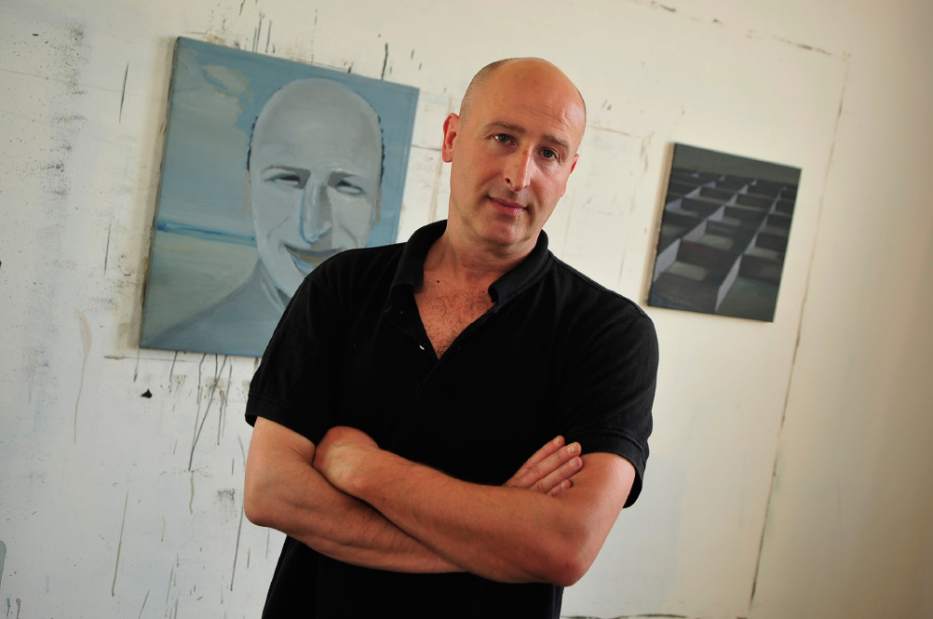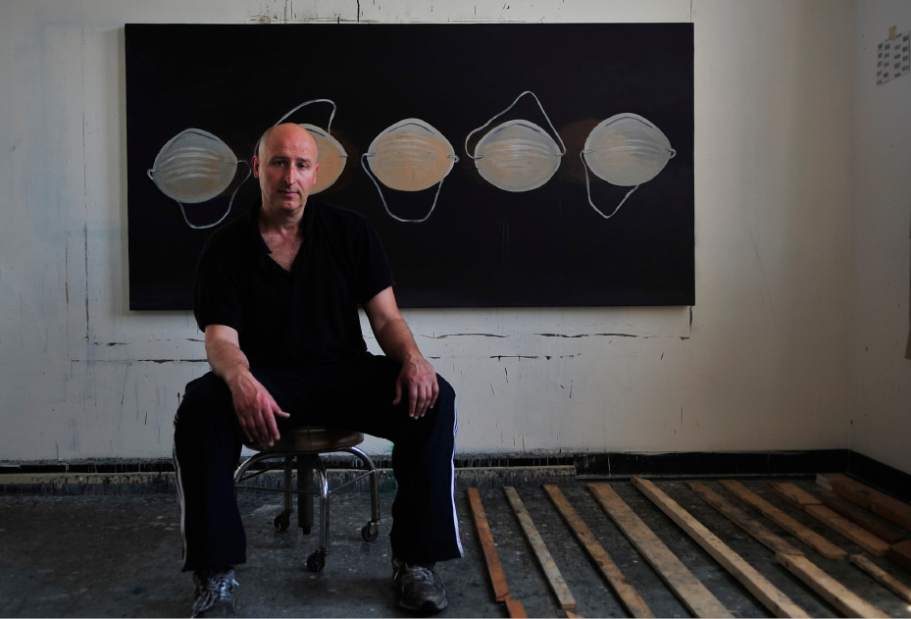Artists find the Pittsburgh area a good fit
Fabrizio Gerbino has soft blue eyes and a cherubic smile that wouldn't be out of place in a classical Renaissance painting. Nearly a decade living in Pittsburgh hasn't effaced his melodious Italian accent.
Born in Libya and raised in Rome and Florence, Gerbino is a painter and installation artist who now makes his home in Stowe.
In addition to painting, he reproduces found objects by hand, using the painstaking artisan's skills learned from his artist father, Eugenio. He's preparing an installation that consists of 800 objects. He'll debut the work at "Factory Direct: Pittsburgh," which opens June 24 at Guardian Self Storage in the Strip District.
The exhibit is sponsored by the Andy Warhol Museum.
Gerbino met his wife, Stowe native Cynthia Lutz-Gerbino, while she was employed in Florence for the study abroad program for the University of Michigan and the University of Wisconsin. They moved back to Pittsburgh in 2003. Their son, Gabriele,12, sometimes plays amid the agreeable clutter of his father's studio, which is in a converted church next to their house.
Like many artists, Gerbino found an accommodating work environment in the Pittsburgh region. Whether their passports list their point of origin as England, Egypt, Hong Kong or Italy, the region's low cost of living and lively arts climate have made it an attractive place for foreign-born artists to live and work.
"We all knew New York is the ultimate art market, but I thought, 'How are we going to move to New York with not much money?' " Cynthia Lutz-Gerbino says. "We had a little savings, and the move here was kind of scary with a child. I wanted to be here with my family."
While a job or family roots may influence the decision to relocate here, the region's relatively sane real-estate prices mean that artists can rent studio space and a place to live. The Carnegie Museum of Art, Pittsburgh Cultural Trust and Associated Artists of Pittsburgh offer institutional support along with the many colleges and universities. And the Internet has made it possible for artists to market themselves around the world.
"Globalization has not only increased the number of significant centers for visual art around the world, it has also made it possible for artists away from commercial centers to make national and international careers for themselves," says Lynn Zelevansky, director of Carnegie Museum of Art. "Pittsburgh has many qualities to attract visual artists who might otherwise live in New York or Los Angeles."
Both Zelevansky and Gerbino would like to see a larger collector base in the region.
What was difficult about moving from Europe to Pittsburgh?
"Everything," Gerbino says.
"The supplies, the language, the metric system," his wife says.
"I didn't know how to take a bus," her husband says. When it came time to get his driver's license, he studied a driver's manual that was written in Spanish because it was the closest thing to Italian.
Multimedia artist John Carson was born in Northern Ireland. He moved to Pittsburgh six years ago to take a position as department head of the School of Art at Carnegie Mellon University. Last year, he presented his solo video installation, "Timelines," at Pittsburgh Filmmakers. He lived in London for 23 years before moving to Pittsburgh.
"What used to happen, I think, in times gone by, when you came here, if you came as part of an Irish community or Italian community or German community, you'd live in a particular area," he says. "There'd be a ghetto. The sort of social networks today is different than that. It's much more of a mix. It's got a real attraction at the moment for academics or for artists."
Hong Kong native Bovey Lee came to Pittsburgh in 2000 to teach graphic design and foundation design in the University of Pittsburgh's Studio Arts department. She'd already lived in the United States for seven years, first at the University of California at Berkeley, where she earned her master of fine arts degree in painting, then in New York City and Lock Haven, Clinton County.
Lee's artistic medium is paper, which she cuts into everything from towering 10-feet pieces to small, intricate snowflake-like objects. Her father, a retired interior designer, introduced her to paper cutting when she was growing up in Hong Kong.
She says Pittsburgh's art scene is more willing to take a chance on more experimental works, as opposed to commercial galleries in big-market cities like New York. She's exhibited in Hong Kong, Japan and San Francisco.
"Pittsburgh has an art community that fosters and affords artists (a chance) to think and create work independently," she says. "We are known for our world-class museums, and nonprofit arts organizations do great work to support local artists. In my recent conversations with a curator in New York, she raved about Pittsburgh's up-and-coming status as a new art destination. I see many young artists here living really interesting lives and paving their own creative paths."
Later this summer, Australian painter and sculptor Gemma Smith moves to Pittsburgh to join her husband, Nicholas Chambers. the new Milton Fine curator at the Andy Warhol Museum on the North Shore. Smith has been commissioned to design and fabricate a ceiling mural for the new Supreme and District Court building in Brisbane.



